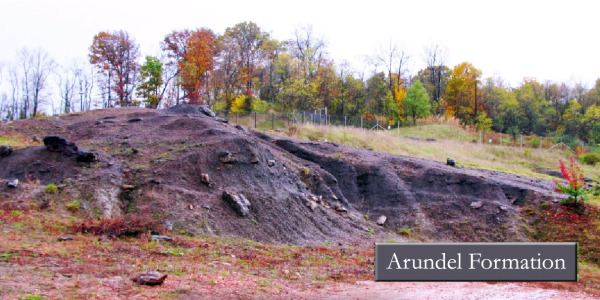Type sedimentary Named by W. B. Clark, 1897 | Thickness up to 125 feet | |
 | ||
Region Maryland, Washington D. C. | ||
The Arundel Formation, also known as the Arundel Clay, is a clay-rich sedimentary rock formation, within the Potomac Group, found in Maryland of the United States of America. It is of Aptian age (Lower Cretaceous). This rock unit had been economically important as a source of iron ore, but is now more notable for its dinosaur fossils. Although often considered a formation, it may be only oxbow swamp facies within the Potomac Group.
Contents
DinosaursEdit
Dinosaurs present include cf. Acrocanthosaurus, the poorly known theropods "Allosaurus" medius, "Creosaurus" potens, and "Coelurus" gracilis, the ornithomimosaurian "Dryosaurus" grandis, as well as other indeterminate ornithomimosauria, the sauropods Astrodon and Pleurocoelus, the nodosaurid Priconodon, a possible basal ceratopsian, and potentially the ornithopod Tenontosaurus. Other vertebrates are not as well-known from the formation, but include a freshwater shark, a lungfish., at least three genera of turtles, and at least one crocodilian.
PterosaursEdit
Unassigned pteradactyloid tracks.
Other fossilsEdit
W. B. Clark (1897) described lignitized trunks of trees often found in upright positions with their roots still intact.
G. J. Brenner (1963) described spores and pollen within the formation.
